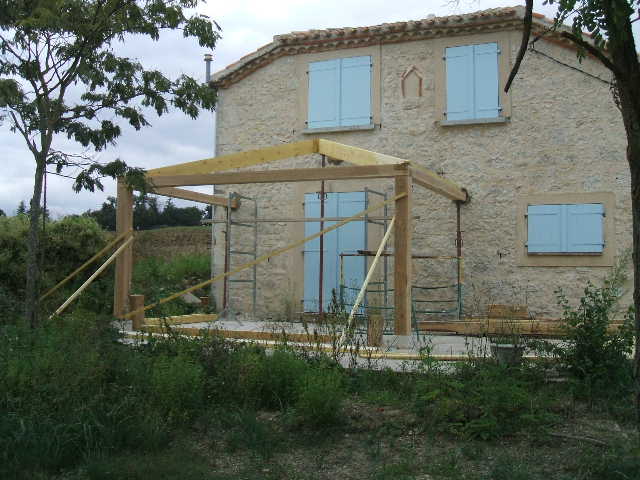
When tackling any renovation project, the biggest hurdle often seems like figuring out how much everything is going to cost. Let’s break this down and make it less daunting. Renovation costs can vary wildly depending on the type of room or space you’re planning to upgrade, like kitchens or bathrooms, which are usually front-runners for costly projects.
Several key factors influence these costs. Think of the materials you’re going to use, the structural work that might be needed, and the intricacy of the design. Even small changes in these areas can greatly affect the final tally. It’s vital to have a handle on these elements early on to avoid any costly surprises down the line.
So, how do you estimate renovation costs effectively? Start with a solid game plan. Get quotes from multiple contractors and check them against your expectations. This comparison will give you an idea of the realistic cost range. Remember, online tools and cost calculators can also offer initial insights, but they’re just starting points.
One common pitfall in early cost estimation is forgetting about the hidden expenses, like permits or unexpected plumbing issues. These are the curveballs that can really shake up your budget. Make sure to pad your budget with a contingency fund—say, around 10-20% of the total estimate. That way, you can handle those surprises without breaking a sweat.
Calculating Refurbishment Costs: Methods and Techniques
Renovation and refurbishment—though they sound similar—actually involve quite different tasks. Renovation is all about making spaces look fresh and modern, while refurbishment focuses on restoring spaces to their original condition with a few tweaks here and there to ensure they function well.
Getting the hang of calculating refurbishment costs can save you a ton of stress and cash. Start by listing every job you hope to tackle. Once you have that, research the cost of each task. You might think of labour, materials, and timelines. Online tools and cost estimation software can simplify this process.
Hiring a professional estimator or surveying multiple contractor quotes helps capture the realistic costs. These experts can sniff out potential issues before they become expensive problems, making them invaluable on larger, complex projects. Of course, if you’re more of a DIY fan, keeping a detailed spreadsheet of all potential costs works too.
For a dose of reality, consider some real-life refurbishment cost scenarios. There’s the story of a homeowner who managed to fully refurbish their 50s-style kitchen into retro-chic space on a shoestring budget by reusing and recycling materials. Another one resourcefully leveraged off-season deals to land discounts on otherwise costly materials. These examples drive home that smart planning and strategic decisions play huge roles in keeping costs achievable.
The Biggest Expenses in Home Renovations: Prioritizing Your Spend

Diving into home renovations opens up a world of possibilities, but it also uncovers some pretty hefty expenses. Let’s talk about where the real money tends to flow in projects like these. Kitchens and bathrooms often top the list, notorious for gulping down cash like nothing else.
The costliest aspects often boil down to high-end appliances, custom cabinetry, and extensive plumbing or electrical work. Kitchens with bespoke cabinets or imported countertops and bathrooms with intricate tile work or high-tech fixtures can easily inflate your budget.
Quality certainly doesn’t come cheap, but balancing what you want versus what you can afford is crucial. It’s perfectly feasible to save in some areas while splurging in others. For instance, consider less expensive, yet durable materials that mimic high-end looks. Think opting for laminate countertops instead of marble or choosing stock options for cabinets and modifying them later if need be.
Pro tips to reduce costs include shopping around extensively. Find suppliers who offer competitive pricing, or hunt for sales and clearances to nab high-end items at lower prices. Don’t shy away from second-hand stores either, which can be treasure troves for unique, affordable pieces.
Ultimately, prioritizing spending means aligning your budget with what adds the best value to your home—not just what gives it the glossiest appearance. Weigh the longevity and daily functionality of your choices against their price tags so your updated space doesn’t compromise on quality.
Renovation Budgeting: Setting and Managing Your Financial Limits
Creating a renovation budget isn’t about picking a random number and hoping for the best. It’s a thoughtful process, a little like crafting a blueprint for your dream home. First, break down your budget into categories: materials, labour, permits, and any other sneaky costs that might pop up. This helps keep everything organized, so nothing falls through the cracks.
Starting your budget can feel like staring at a blank canvas, but you’ll need some numbers to guide you. Use online samples or previous renovations as a template, adjusting according to current market rates and personal preferences. Speaking with contractors to get accurate quotes also provides a realistic grounding.
Tracking renovation expenses as they happen can save loads of headaches down the line. Digital tools like budgeting apps or a simple spreadsheet do wonders in keeping track of every cent. You’ll want to record actual expenses alongside your estimates to see how accurately your plan is playing out.
Avoiding mistakes is part and parcel of staying on course. Some folks jump straight to the fancy fixtures without setting up a solid budget. A little foresight can prevent panic later, like realizing your funds are too low for your wish list. Recovery is possible by revisiting priorities and altering your scope if the budget’s stretched. Remember, keeping some flexibility can be a lifesaver.
Post-Renovation Review: Ensuring Your Investment is Sound
Once the dust has settled and the tools are put away, it’s time to check the results of your renovation efforts. Ensuring your investment is sound goes beyond just admiring the new look. It means thorough checking to confirm everything was done as planned, on budget, and that it meets your expectations.
First, get your hands on a snapshot list of what to inspect. This includes checking if all the work matches the specifications in your contract. Pay attention to the finish of walls, the alignment of cabinets, and whether fixtures are installed properly. Each detail matters for a quality finish.
Ensure any unforeseen issues, like lingering minor defects, are tackled immediately. Quick fixes might seem tempting, but addressing issues properly ensures they won’t haunt you later. Depending on the contract, your contractor might be responsible for these adjustments within a warranty period, so don’t hesitate to call them back if needed.
Reflect on whether the work lived up to the initial design goals and stayed within the budget. It’s also crucial to manage any additional costs that weren’t initially planned. Knowing where things went a little off track helps in future planning and budgeting.
Finally, maintaining your newly renovated space is key to preserving its quality over time. Regular maintenance checks and prompt handling of wear and tear issues will keep your space looking fresh and functioning well year-round. Expert guidance from upkeep professionals can also safeguard your investment, ensuring your renovation stands the test of time.
